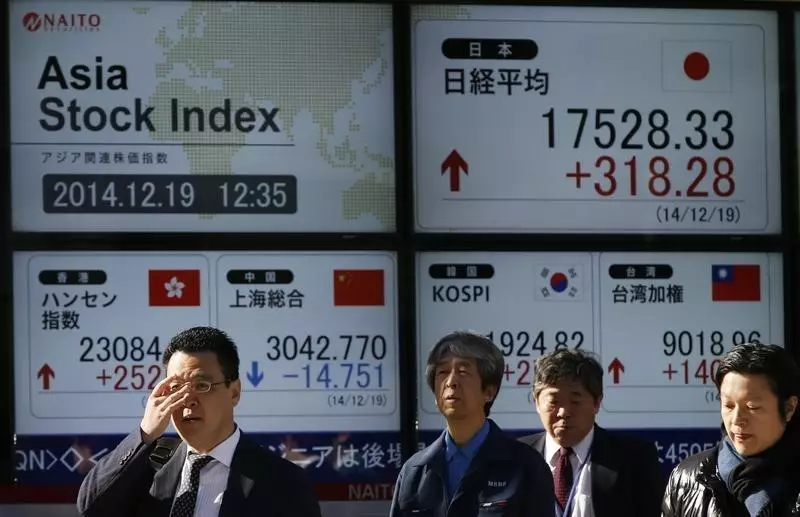As the year draws to a close, Asian stock markets are feeling the ripple effects of a weakened financial environment emanating from Wall Street. Reports indicate that many indices across Asia exhibited declines on the first trading day of the New Year—available data suggesting a correlation to economic data released just prior to the holidays. While many global markets took a break for New Year celebrations, notable declines were observed particularly in markets directly linked to Chinese manufacturing data, which has shown signs of weakness, raising questions about future growth.
The U.S. market’s tumultuous wrap-up of 2024 set the tone for Asian trading. The anticipated “Santa Rally”—a phenomenon where stocks typically experience a surge during the holiday season—failed to materialize due to lackluster investor sentiment and disappointing performance in key sectors. This disheartening backdrop prompted a sea of red in futures trading for major Asian stock indexes, even before many opened for the day.
Recent data from China underscored a worrying trend for investors: manufacturing activity expanded at a slower-than-expected pace in December. This is evidenced by private purchasing managers’ index (PMI) figures releasing figures below expectations, signaling potential stagnation in one of the world’s most crucial economies. The weak PMI results come hot on the heels of government releases that painted a similarly grim picture, suggesting that the effects of recent stimulus measures are waning. This situation puts immense pressure on Beijing as it seeks to implement consistent economic stimuli to cultivate growth in the face of global headwinds.
Furthermore, the decline in Chinese stocks exacerbated these concerns—the Shanghai Composite and the Shanghai Shenzhen CSI 300 indices plummeted by 0.9% and 1.3% respectively, showcasing investor anxiety regarding the nation’s economic resilience. The ongoing narrative surrounding China’s economic ambitions has shifted toward a desperate quest for clarity on potential fiscal policies that may be employed in 2025 to bolster demand and stabilize the manufacturing sector.
The turmoil in Chinese markets has steadily cascaded through its regional neighbors. For instance, Hong Kong’s Hang Seng index was one of the hardest-hit, slumping by 1.7%. This downturn was exacerbated by Alibaba’s shocking announcement regarding its exit from Sun Art Retail, which sent shares plummeting—demonstrating the interconnectedness of Asian economies and the profound impact of major corporate decisions on market psychology.
Singapore’s Straits Times Index showed signs of stagnation as the economy only minimally grew in the fourth quarter. Expectations were far more optimistic, with forecasts predicting a growth rate of 2%—the actual 0.1% growth served as a stark reminder of the sluggish export demand largely attributed to a cooling Chinese economy. Despite a more than 4% annual growth rate in 2024, signs of vulnerability are becoming more pronounced across the broader ASEAN landscape as external pressures remain palpable.
Adding to the economic woes are external political factors, particularly the anticipated U.S.-China trade dynamics with the transition of power to President Donald Trump. His administration has indicated plans to impose significant tariffs on Chinese goods, further intensifying fears of a trade war that could subject Asian markets to heightened volatility and uncertainty. Together with the Federal Reserve’s less-than-encouraging comments about future interest rate cuts, investor sentiment remains wary.
Political instability in South Korea also casts a long shadow over the region. The recent political crisis following the impeachment of President Yoon Suk Yeol has fostered an environment of uncertainty, holding potential implications for investor confidence. An arrest warrant issued against the embattled leader exposes the fragility of governance in this key economy.
As 2024 unfolds, it is clear that Asian markets are in tumultuous territory, with a confluence of manufacturing slowdowns, political unrest, and looming global trade wars forming a perfect storm. Investors will need to navigate these challenges thoughtfully, balancing risks while remaining alert to any new economic indicators that could signal a turnaround or further decline. Amid these challenges, however, an opportunity remains for prudent investors to assess value amidst chaos, fostering a resilient investment strategy that withstands the pressures of a dynamically shifting economic landscape.

